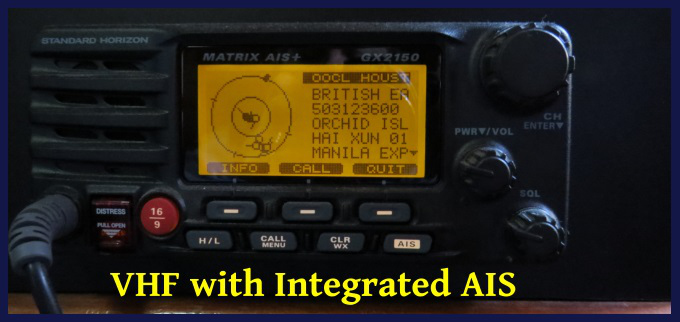The Blue View - In Appreciation of our AIS
/On many of our early passages, we were surprised at how few ships there were outside the shipping channels. We would go for days, weeks or even a month or more without seeing any other vessels. Then, a few years ago, we added a modern radar set and an Automatic Identification System (AIS) and were absolutely gobsmacked at how many more ships were suddenly sailing the high seas...
The AIS was developed to help prevent collisions at sea. Most ships plying international waters and all passenger ships are required to have an AIS. The ship's AIS has a transponder that sends out a digital packet of data via VHF radio every few seconds, providing the ship's position, heading, speed and other pertinent information. In addition, every few minutes, it transmits a larger packet of information containing more detailed information about the ship, such as the ship's name, destination, type and size. Each AIS transponder also receives all those transmitted packets of information being sent by every other ship within VHF radio range.
If that was all an AIS did, it would not be very useful. But the magic is in what a modern AIS does with all the data. The sophisticated algorithms in the AIS calculate the speed and heading of all the vessels in the vicinity and whether any are on a collision course with us. We can set a safety radius around Nine of Cups, typically one nautical mile, and if any other vessel's predicted Closest Point of Approach (CPA) is within that radius, the AIS will sound the alarm. Each vessel's position is shown on our chart plotter, and it is an easy matter to see which vessel may be headed for us.
Our AIS is a passive, or receive only, system. We do not transmit the AIS data for Nine of Cups, but are able to receive the data being sent by the ships around us. That, of course, makes us invisible to everyone else's AIS. If we do get an AIS alarm, since we have the vessel's name and position, we can radio the vessel to determine whether or not they see us or have us on radar, or whether we should begin taking evasive action.
If we are at sea and out of the shipping channels, we usually set our CPA alarm to 15 nm. We aren't worried about a ship approaching closer than 15 miles, but are curious about how many ships are in our vicinity. It is truly amazing how many ships pass by us 10-15 miles away that we wouldn't have spotted had it not been for the AIS, even though we keep a pretty good watch. We often hear the alarm, determine the distance and bearing to the ship using the chart plotter, then try to spot it. If the waves are big and the ship is more than ten miles away, we might only see it every few minutes as we are both on the top of a wave at the same time. At night, it might take several minutes to spot the ship's running lights at that distance.
When we do spot a ship when we are far out at sea, we almost always try to contact it, especially on night watch. If we hail the ship by name, the officer on watch usually responds – especially if it is Marcie calling – she gives great radio. We ask whether we are visible on their radar, and often end up chatting for several minutes. We think that it gives both them and us something interesting to do to help pass a long night watch.
An AIS only helps avoid getting run over by a big ship, however. The other vessels we often spot at sea – fishing vessels, tugs, and other pleasure craft – usually don't have AIS, and if they do, their systems are often passive like ours. The radar is a big help, and will be the topic of another blog, but there is still no substitute for being vigilant and using our eyes to take a good look around.




